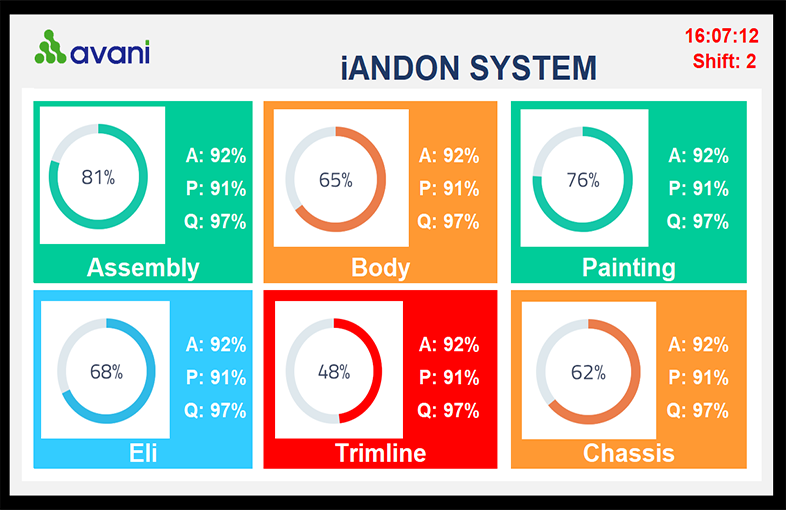
The key values of monitoring OEE index in industrial production include:
Measuring equipment performance: OEE provides an overall view of the performance of production equipment over a given period of time. By monitoring OEE, managers can evaluate the performance of machinery and equipment systems and identify weaknesses and bottlenecks that need improvement.
Identify the cause of reduced performance: By analyzing the components that make up the OEE index (uptime/downtime, production performance and product quality), managers can determine the cause accuracy of performance loss. Thus highlighting the most important issues that need to be addressed to improve OEE.
Track performance over time: Regular OEE monitoring helps track performance changes over time. This helps managers spot trends, both good and bad, and take appropriate measures to adjust production operations.
Increase proactive maintenance: OEE monitoring provides important information about downtime and maintenance wait times. Based on this information, managers can effectively plan periodic maintenance and stockpile supplies and spare parts, helping to minimize machine downtime and enhance the continuity of the production process. .
Continuous assessment and improvement: OEE is not just an indicator but also a management tool and guide for continuous improvement. By tracking and analyzing OEE, managers can identify improvement opportunities and implement improvements to optimize production performance.

OEE monitoring in industrial production not only helps measure performance but also provides important information to manage and improve the production process effectively and continuously.